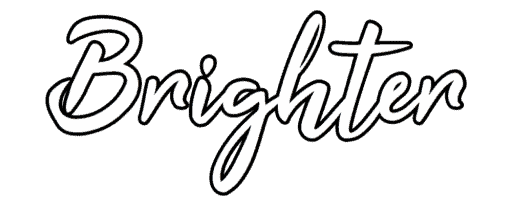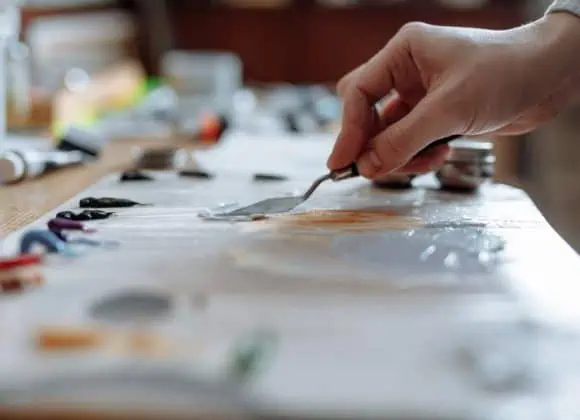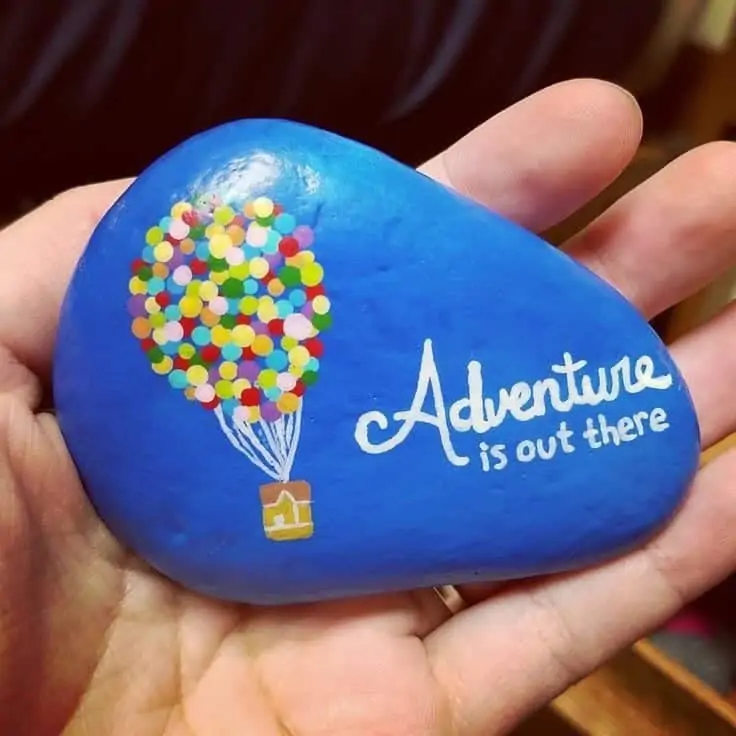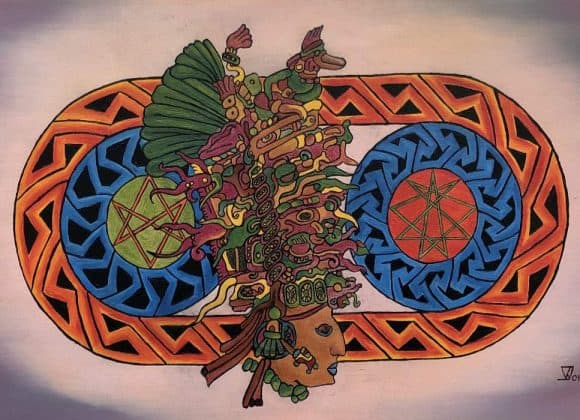Brown can be one of the more difficult colors to get right. It is made by mixing yellow, blue and red in varying amounts. If you want a deep rich brown you could start with a burnt sienna an ultramarine blue and a cadmium yellow. However, if you want a light gold brown you should start with a medium yellow and some zinc white. Add the blue and red you choose very slowly and mix the colors thoroughly until you get the exact shade that you want.
As with mixing any other colors you should try different combinations to get the effect you desire. The rich brown of a heavy clay soil will need different colors than if you are mixing a light sandy brown.
One way to make it easy is by using one primary color and the opposite secondary color on your color wheel. As you begin to understand color theory more it will all get easier. But as each secondary color is made from 2 primary colors, mixing a primary and its opposite secondary color means you are effectively mixing all 3 primary colors.
Table of Contents
Remember that tone and color are different
You should always remember that the tone is different to the color or hue. The tone can be adjusted after you have mixed the color and will help you create depth in your paintings. Mix the color first and then add white or dark colors to adjust the tone until you get exactly what you need.
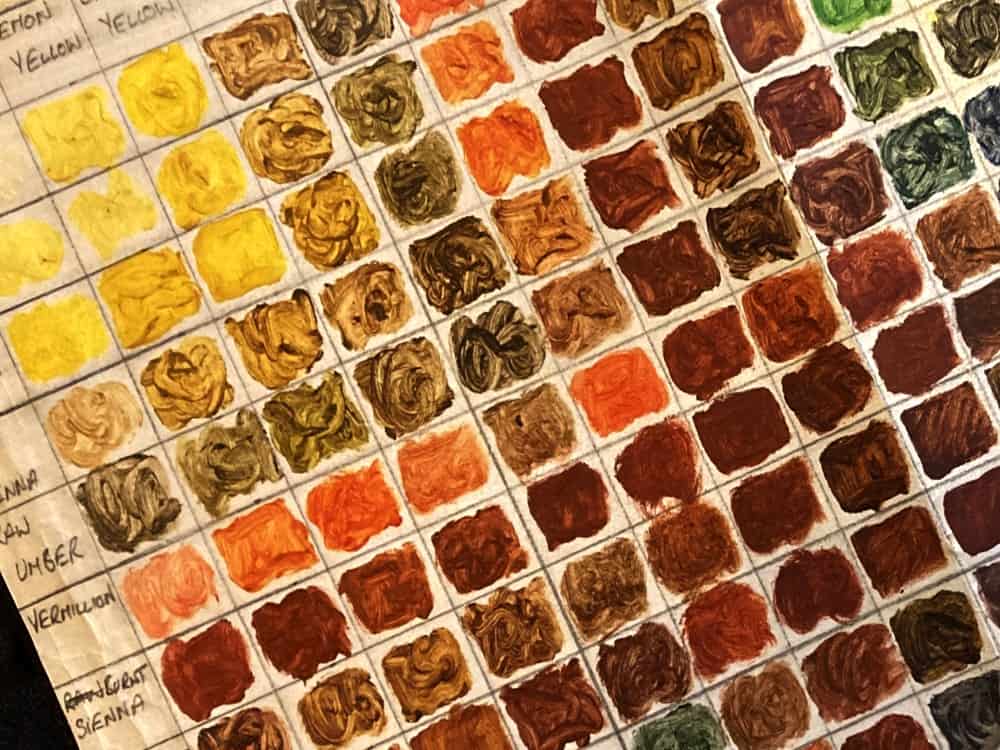
Create paint charts to make beautiful earthy browns
Everyone should make a paint color chart. It will help you understand how mixing different colors can have a very different effect on the final color. Making a brown only color chart by mixing the three primary colors can get complicated but it is easy to get around this.
Draw a grid on your paper and along the top and in the columns write the names of the color paint you are using in that column. Do the same at the start of each row with a selection of secondary colours. Some combinations will work, but others don’t, so try to choose colors that are opposite on the color wheel to the primary color you have used.
You can paint three different charts. One for blue primary based browns, one for red primary based browns and one for yellow primary based browns. In the one that uses blue primary colors the secondary colors should be oranges, ranging from almost yellow to almost red. In the second use a selection of red primary colors and various green hues as the secondary colors. For the final one use yellows as the primary color and purples as the secondary colors.
Try to vary the amounts of color used to mix the various secondary colors to give you a wide selection of results. The more different the colors are, the wider selection of browns you will create.
Learn from your color wheel
You wont see brown on a standard color wheel. Because it is mixed from all three primary colors it is difficult to create a color wheel that shows browns well. What you can do is use your imagination. Visualise the way the three primary colors will mix and try to deconstruct any browns you see. Some browns will be obviously redder or yellower but others will be harder to work out. The one thing you can be sure of is that it is possible to mix any brown you need from the three primary colors and white or dark to adjust the tone.
In time it will get easier. You will look at a brown and think “I need a warm yellow with a lighter red and a small amount of blue”. As you get more experienced you will immediately think “lemon yellow, napthol crimson and cobalt blue” for example. You will just know what colors too use.
Practice will help you understanding the amount of each color you will need. It will save you hours of time in the long term and will help you take your understanding of colors to a different level.
Please note, the colors in the chart above are representative. Computers will render them according to set up so the colors will vary from one screen to another. The idea is to give you an idea of the different effect that mixing slightly different colors can have on the mixed color.
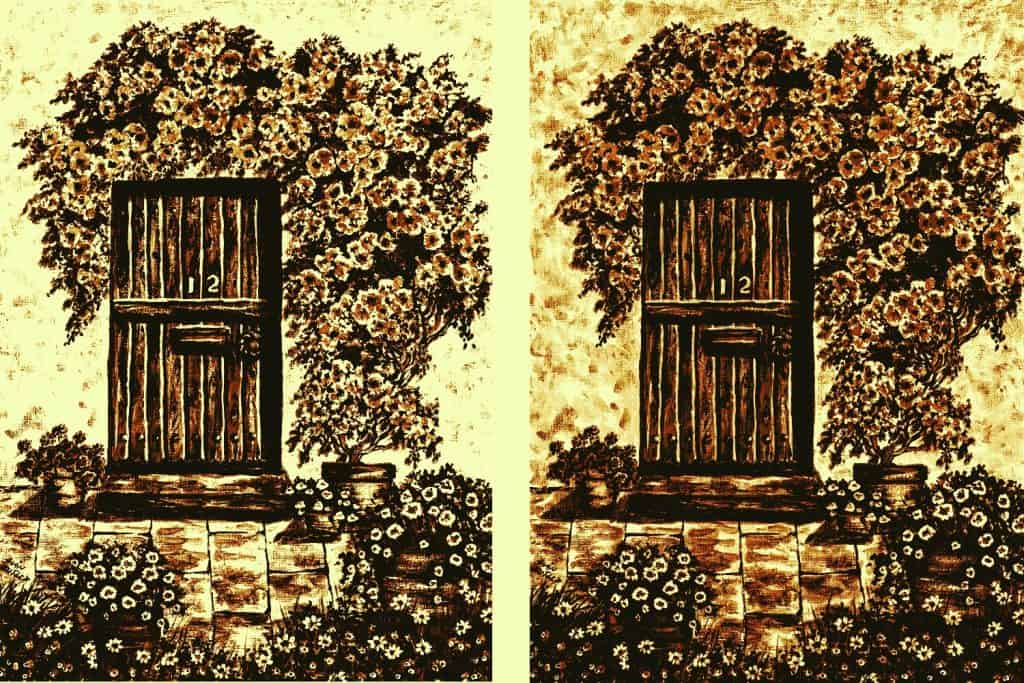
Adjusting the tone
You can see the two paintings above are very similar. They are both painted with the same brown palette. The difference is all in the tones used. The picture on the right is all very slightly darker. All the tones are adjusted very slighty. The individual parts of the painting look almost identical, but when you step back you can see thee overall difference that darkening the tone has had.
Make mixing colors as easy as you can
how to make brown paint with oils
Mixing oil paints can make the whole thing easier because they don’t dry out so quickly. First run a big line of the yellow you want to use across the top of the page with a palette knife. Then put a blob of blue in one of the bottom corners and a blob of red in the opposite bottom corner.
Scrape areas of the yellow downwards so you have varying amounts of yellow all over the top half of the paper (you will need to prime the paper). Then clean the palette knife and spread the blue and yellow towards the centre of the page. Where the different colors start to get close to each other mix them.
Add different amounts of each color and mix a small area then run the paint into the mixed color to adjust the color again. You will end up with a huge array of browns across the page all created from the same 3 colors.
How to make brown paint with acrylics
If you use acrylic paint you will need to work quickly to get the best browns. Because the paint dries quickly you will need to mix a base color on your palette first. It is best to have a blob of the colors you will be mixing in a triangle with space between the colors to mix the brown.
The brown you want to mix will determine the best colors to start from. If it is a dark brown then starting with the blue can make it easier. Add a similar amount of red and then add the yellow to get the base brown you want.
I often mix the blue and red thoroughly first and then add it gradually to the yellow. If I want it lighter then I will add more yellow and possibly some zinc white until I get the shade I want. As it gets closer to the color I am creating I can add small amounts of the red or blue as needed.
Having a solid base color then makes it easier to add thin washes or use dry-brushing to get the tonal variations I want. There will always be small amounts of the colors that are less mixed on your palette too so if an area is in sunlight you can add a little more of the yellow, or if it is in the shade you can add some of the blues to darken and cool the color.
How to make brown paint with watercolors
With watercolors you should always remember the paper is your white. Don’t add too much pigment at once and always start from the darker areas if you can.
You can mix the paint on the paper if you use plenty of water but I tend to mix the paint on my palette a little first. You dont need the exact color to begin. I keep the tones lighter at first and then darken them gradually as I paint.
Always remember not to paint too dark too quickly as it can be hard to lift paint off. If you do need to lift some paint off then dampen some kitchen roll and squeeze out the excess water, then dab gently on the areas that have got too dark and it will lift some of the pigment off the paper.
Use thin washes to gradually adjust the tone as you progress across the painting and it will be easier to adjust each part of the color. Mixing your red and blue should give you a color dark enough for most of the shadow and just leave more of the paper showing through for the highlighted areas.
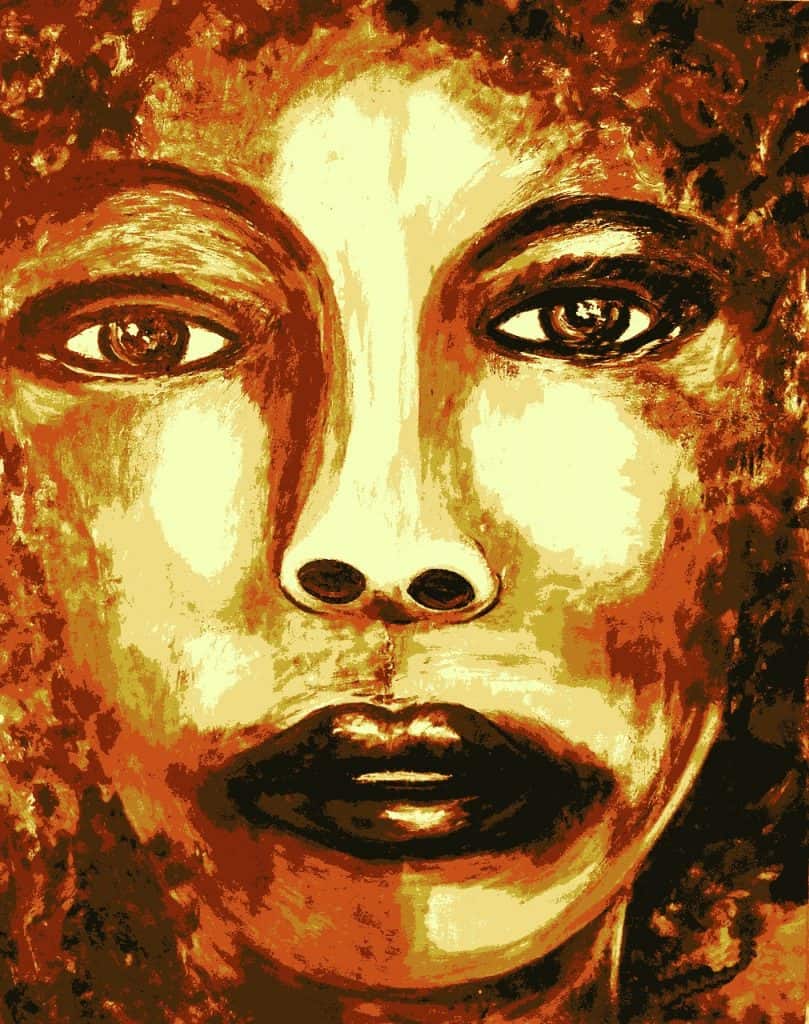
Experiment until you get the results you want
Experiment with different combinations of paint color as often as you can. Compare the results if you do the same thing with cobalt blue paint and then with ultramarine blue instead. Use lemon yellow and then chrome yellow and again compare the results. Do the same using a cadmium red light and alizarin crimson and study the differences to try and understand the effect those specific colors have when mixed.
You will notice some colors have a much stronger effect. This is because some colors have a higher pigment content than others. Remember there is never just one way of mixing any color too. You can usually mix the same color using slightly different colors in the mixture.
An ultramarine blue has a small amount of red already in it so will need less red in the mix than a cobalt blue would. A chrome yellow also has more red than say a lemon yellow, so the final mix will likely need a little less red if you are using chrome yellow as your yellow.
Try to use the colors you already have rather than buying new colors each time. If you have a cobalt blue use it. If the brown you want is a warmer brown, add a little more red or some warm yellow into the mix to get the color you want.
Final thoughts
There are no limitations to the possibilities of color you can create – your imagination is the only limit. Make a mental note of how many distinct browns you can create using the primary colors in your paint box. You may be shocked at how many different hues you can make with your basic colors.
As your expertise develops, it will get less difficult and more intuitive to combine the precise hues you desire. Always be cautious not to overdo any one color at any time. It’s simpler to add a color than it is to remove one.

